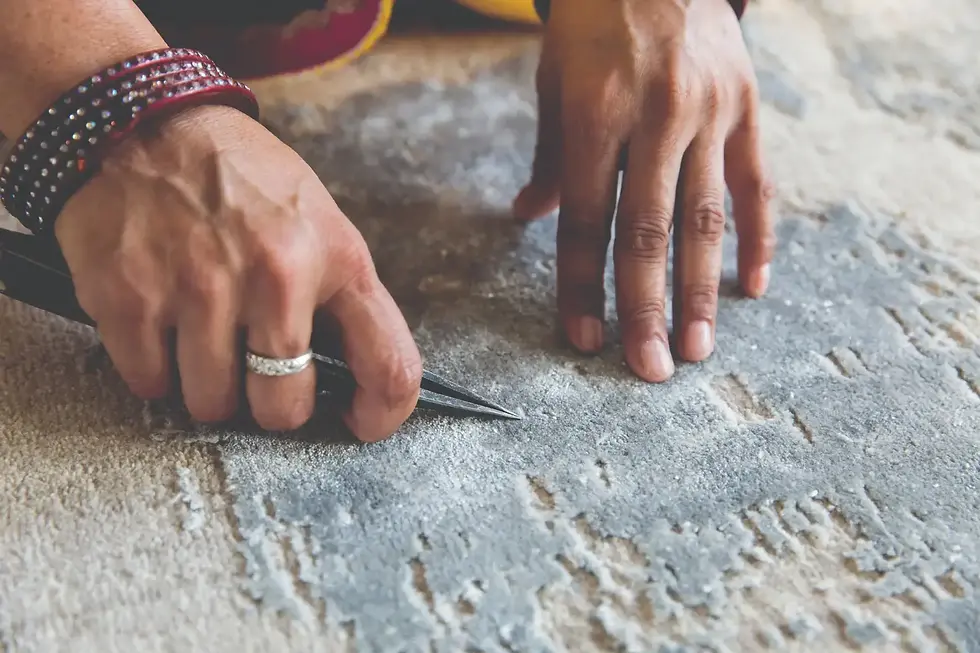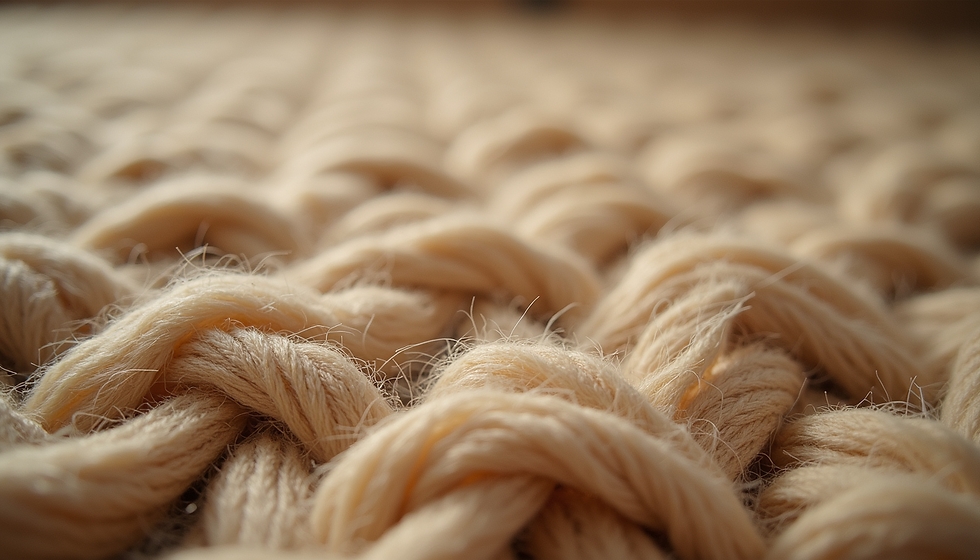Understanding the Key Differences Between Handloom and Hand-Tufted Rugs for Informed Design Choices
- Edoburg Pipes
- Jun 20
- 3 min read
Selecting the right rug can transform your space, making it feel inviting and stylish. However, with various types available, it's crucial to understand the differences between handloom and hand-tufted rugs. Each has unique features and benefits that affect the look and feel of your interior. Let's dive into the details, helping you make informed choices that match your design vision.
What Are Handloom Rugs?
Handloom rugs are crafted using traditional weaving methods. Skilled artisans weave yarns together, creating intricate patterns and designs on a loom. This manual process engages the weaver's craftsmanship; each rug tells a story about its creation.
Handloom rugs are typically made from natural fibers such as wool, cotton, or silk. For example, a handloom wool rug might use locally sourced wool from high-quality breeds, ensuring durability and softness. The absence of mechanical intervention means that each piece showcases the weaver's skill and cultural background.
What Are Hand-Tufted Rugs?
In contrast, hand-tufted rugs use a blend of handcraft and machine processes. Artisans start with a canvas backing and use a tufting gun to push wool or other fibers into pre-drawn designs. This method is faster than handloom weaving, making hand-tufted rugs more accessible.
You can often spot hand-tufted rugs by their plush texture and contemporary designs. For instance, a hand-tufted rug featuring bold geometric patterns can add a pop of modernity to a living room. These rugs are typically more budget-friendly, making them an appealing option for both designers and homeowners.
Key Differences Between Handloom and Hand-Tufted Rugs
Construction Techniques
The main difference is how each rug is created. Handloom rugs are woven with care, while hand-tufted rugs are formed using a tufting gun. This results in variations in texture and overall quality. On average, handloom rugs can have a density of around 1,000 knots per square inch, compared to hand-tufted rugs that typically have about 400-600 knots.
Durability and Lifespan
Handloom rugs usually have a longer lifespan due to their tight weaving. They can last over 20 years even in high-traffic areas. Hand-tufted rugs, while robust, may last around 5 to 15 years, depending on their use and care. For example, a handloom rug in a hallway might show no significant wear even after a decade, whereas a hand-tufted rug in the same space may require replacement sooner.
Cost Considerations
Price differences are notable. Handloom rugs are generally more expensive due to their craftsmanship, averaging between $200 and $2,000. A unique piece might even reach $5,000. Hand-tufted rugs often cost between $100 and $500, making them suitable for designers needing more budget-friendly options without sacrificing style.
Aesthetic Versatility
Both rug types come in various styles. Handloom rugs offer a traditional charm, reflecting the weaver's cultural heritage. For example, a Persian handloom rug adds a classic touch to a dining room. Hand-tufted rugs can showcase bold and trendy designs, suitable for modern spaces, like a bright area rug featuring abstract art in a contemporary loft.
Maintenance and Care
Caring for your rugs is essential for longevity. Handloom rugs need regular vacuuming and occasional professional cleaning. Maintenance tips include using a soft brush to remove dirt gently. In contrast, hand-tufted rugs tend to be more resilient against spills, especially those made from synthetic fibers. For example, if a coffee spill occurs on a hand-tufted rug, a quick blot and mild soap can often suffice.
Why This Matters for Designers
Understanding these differences helps designers choose the right rug based on specific project needs and budgets. For high-end projects focused on durability and luxury, handloom rugs are an excellent investment. However, if you are working within a tighter budget or need a contemporary look, hand-tufted rugs offer flexibility without sacrificing style.
Final Thoughts
Grasping the differences between handloom and hand-tufted rugs is vital for designers seeking to create beautiful and functional spaces. By considering durability, cost, aesthetic appeal, and care requirements, you can make more informed choices. Exploring various styles can open up a world of possibilities for your next design project.
When searching for high-quality options that align with your vision, look through product catalogs or consult with experts at Caldra Rugs to find the best fit for your needs.






Comments